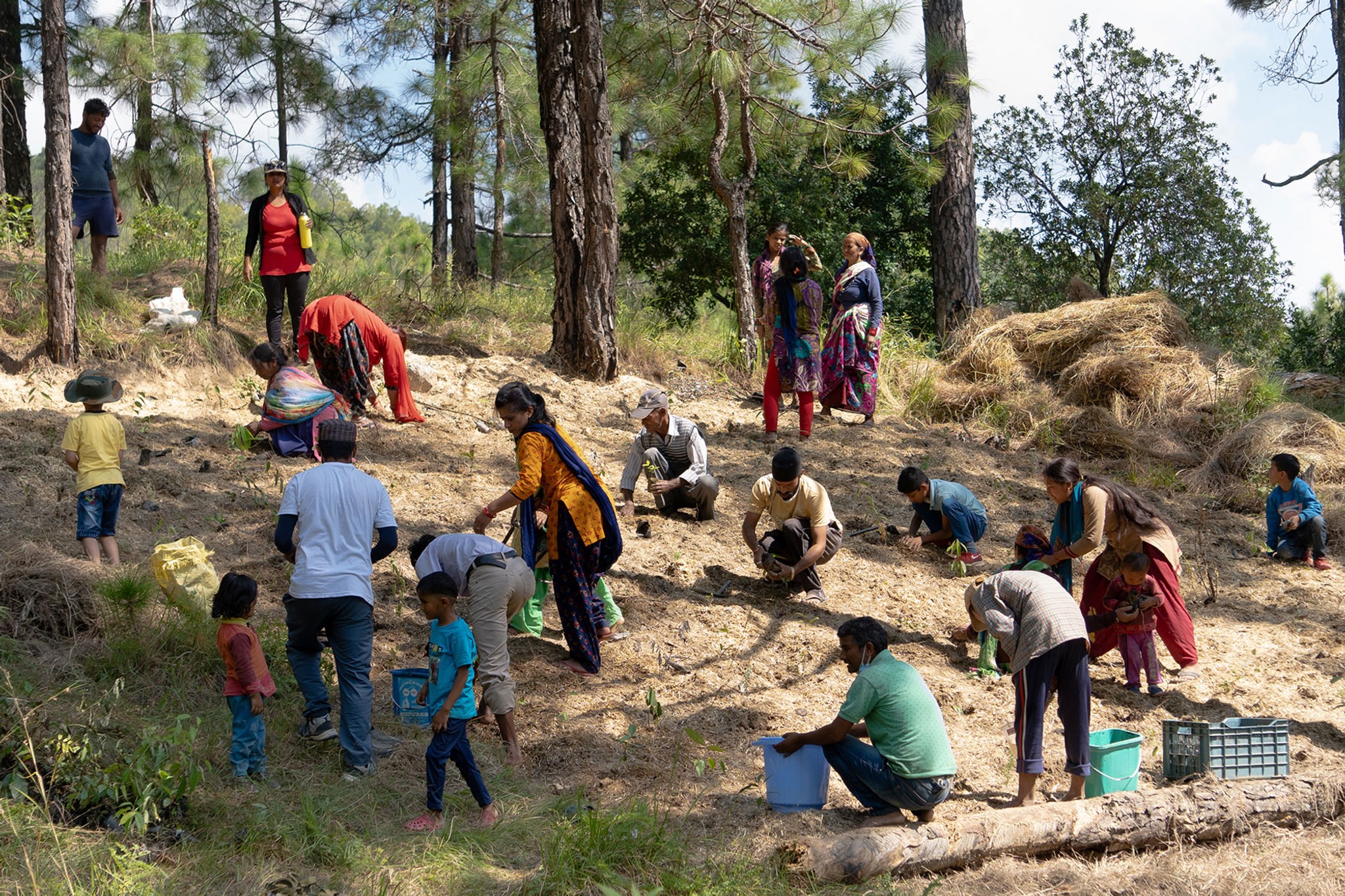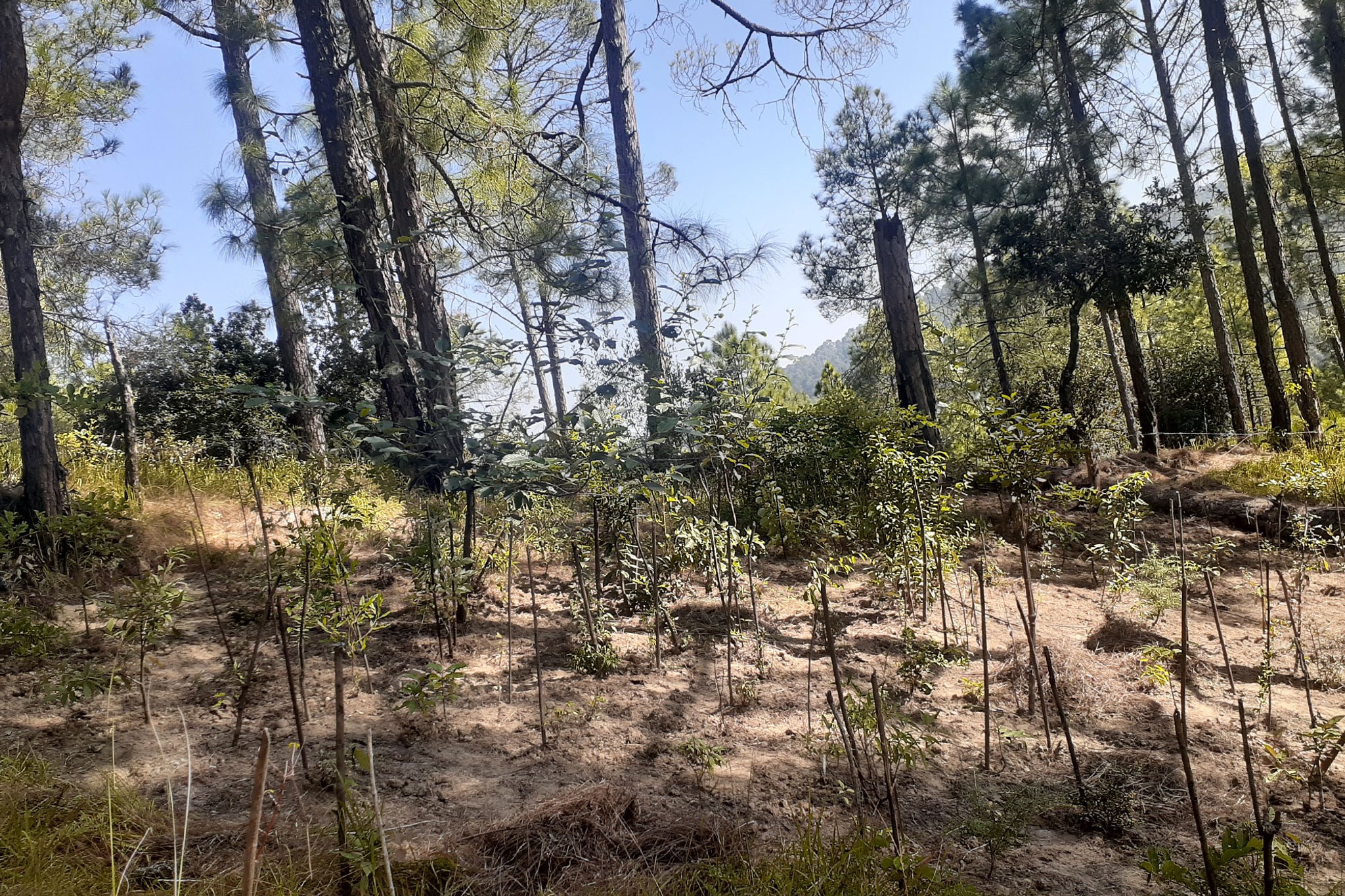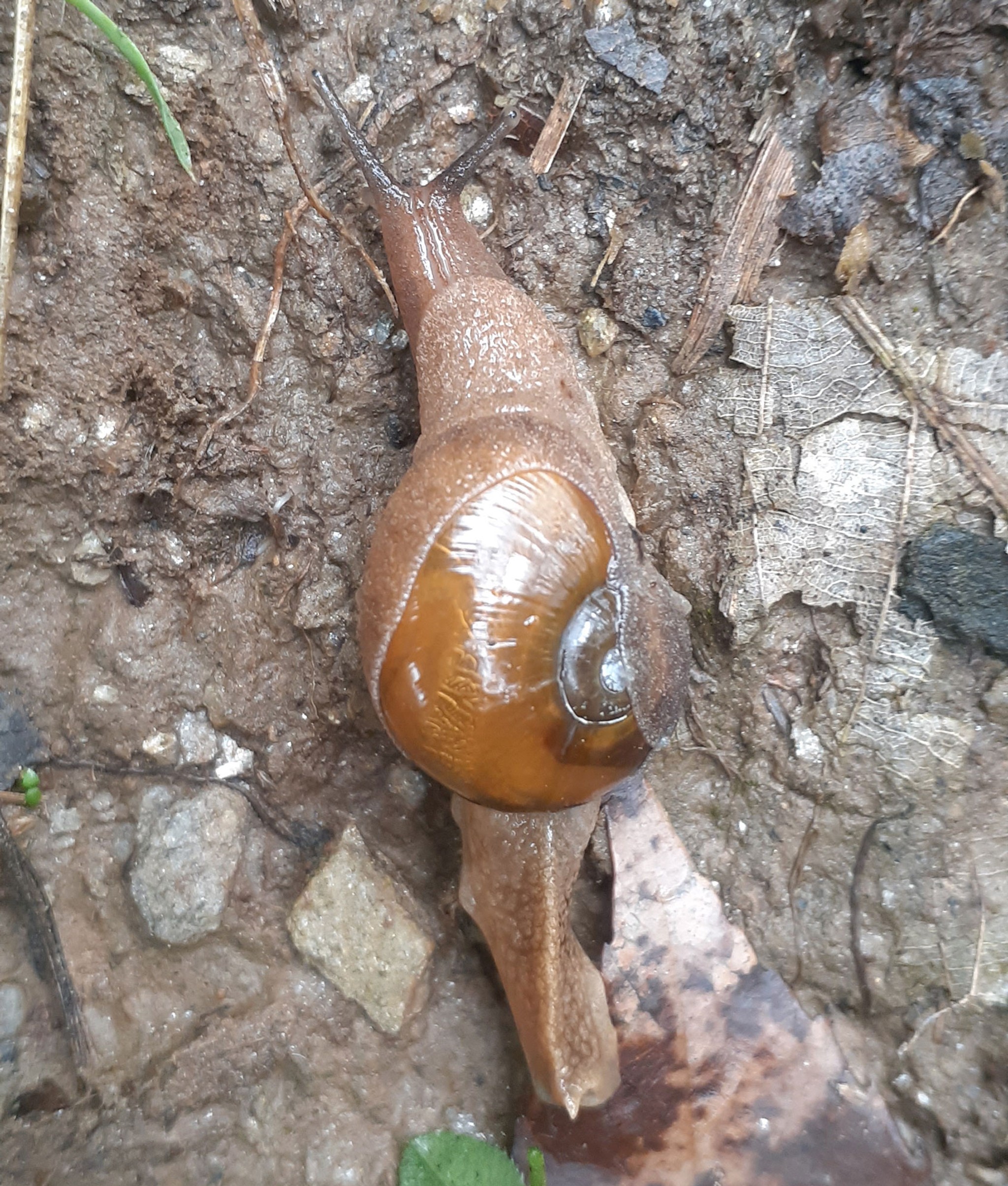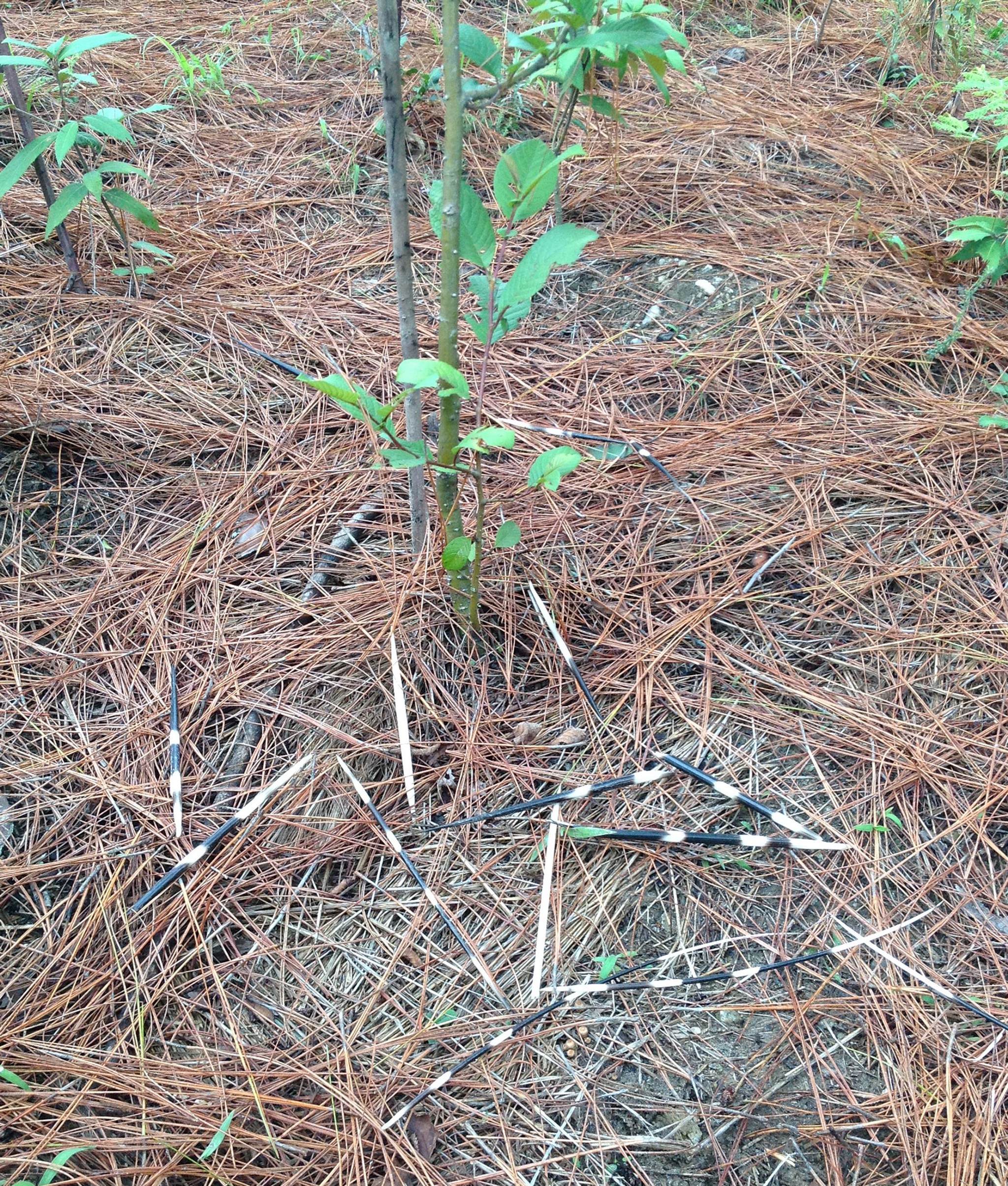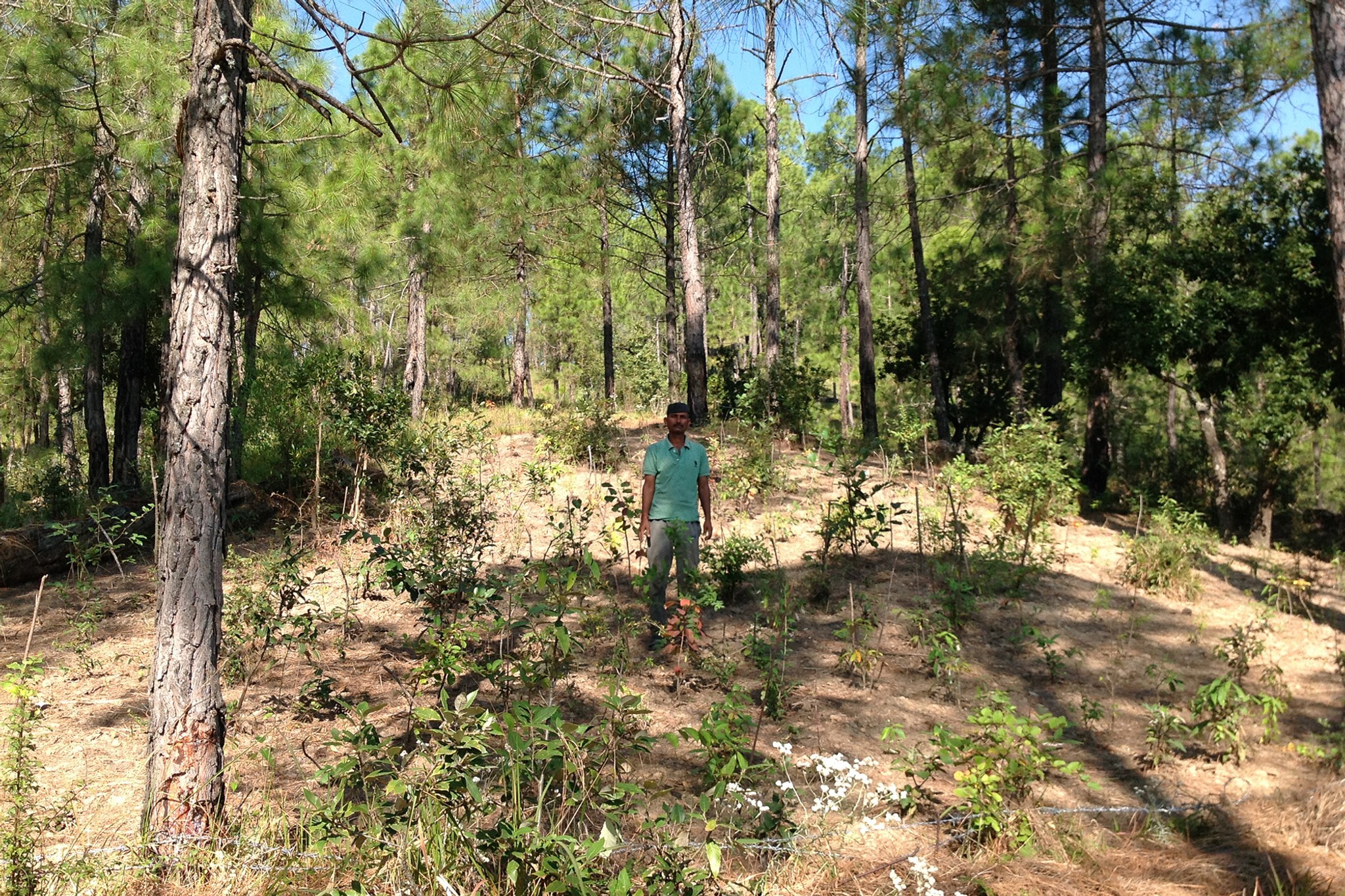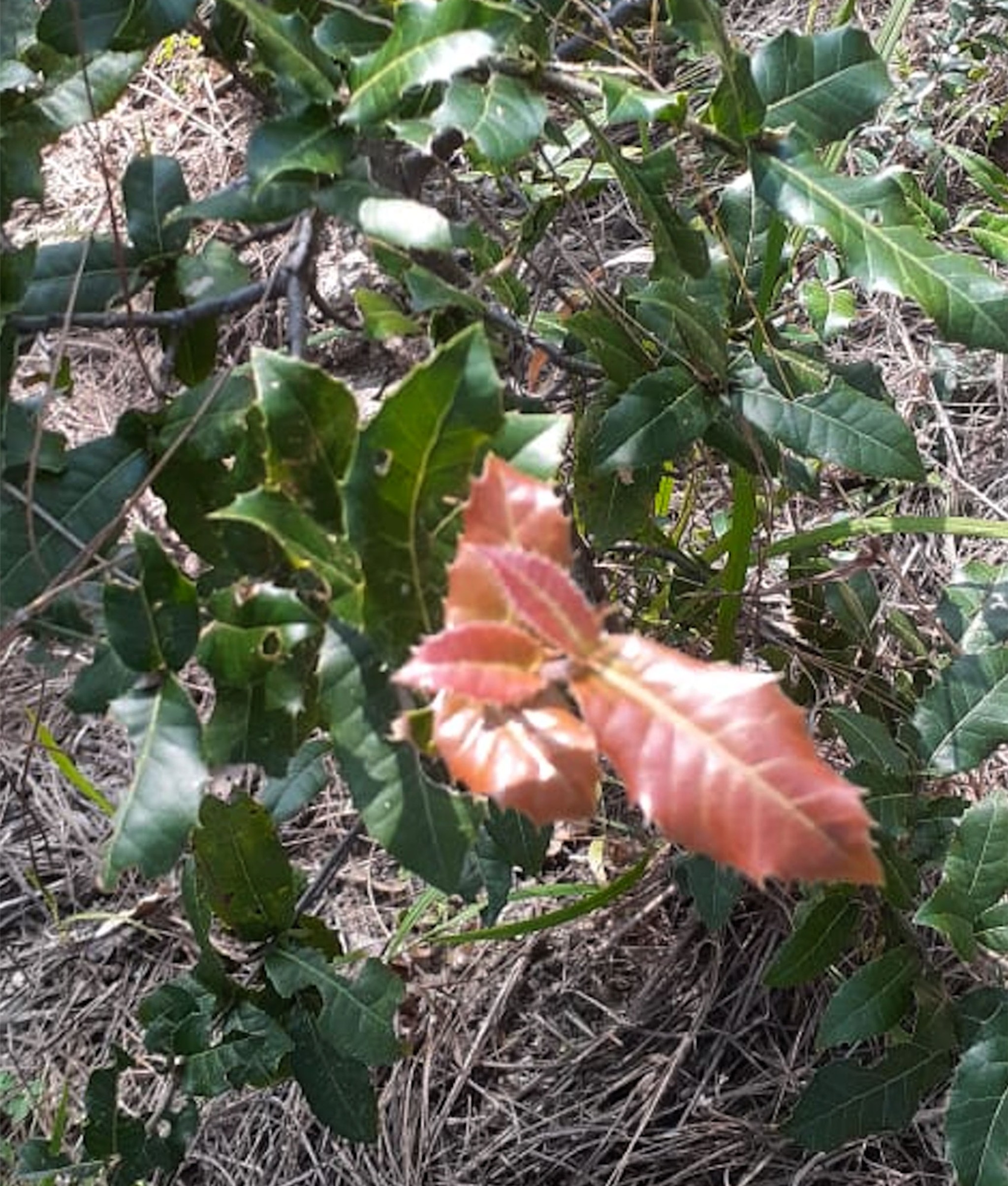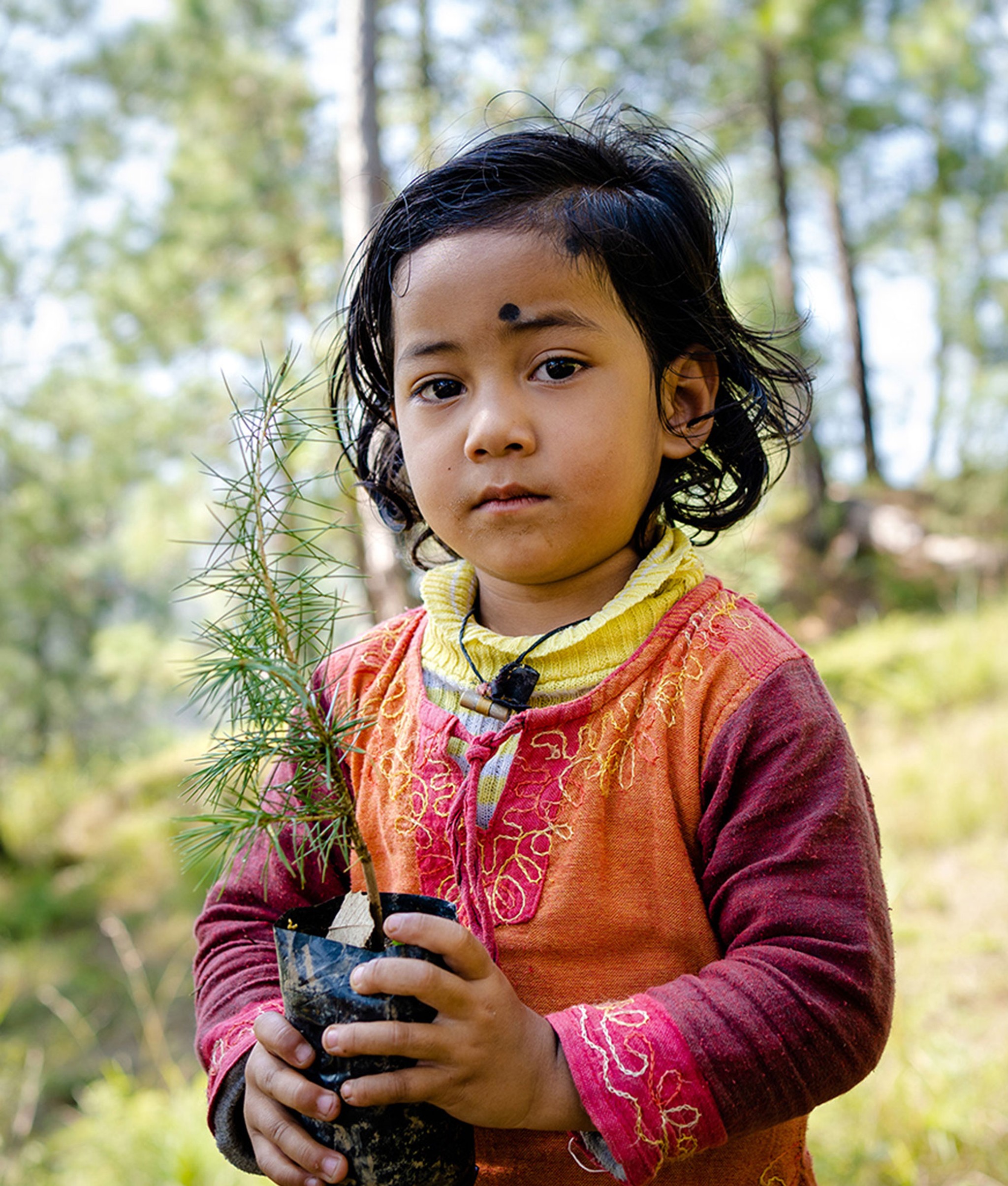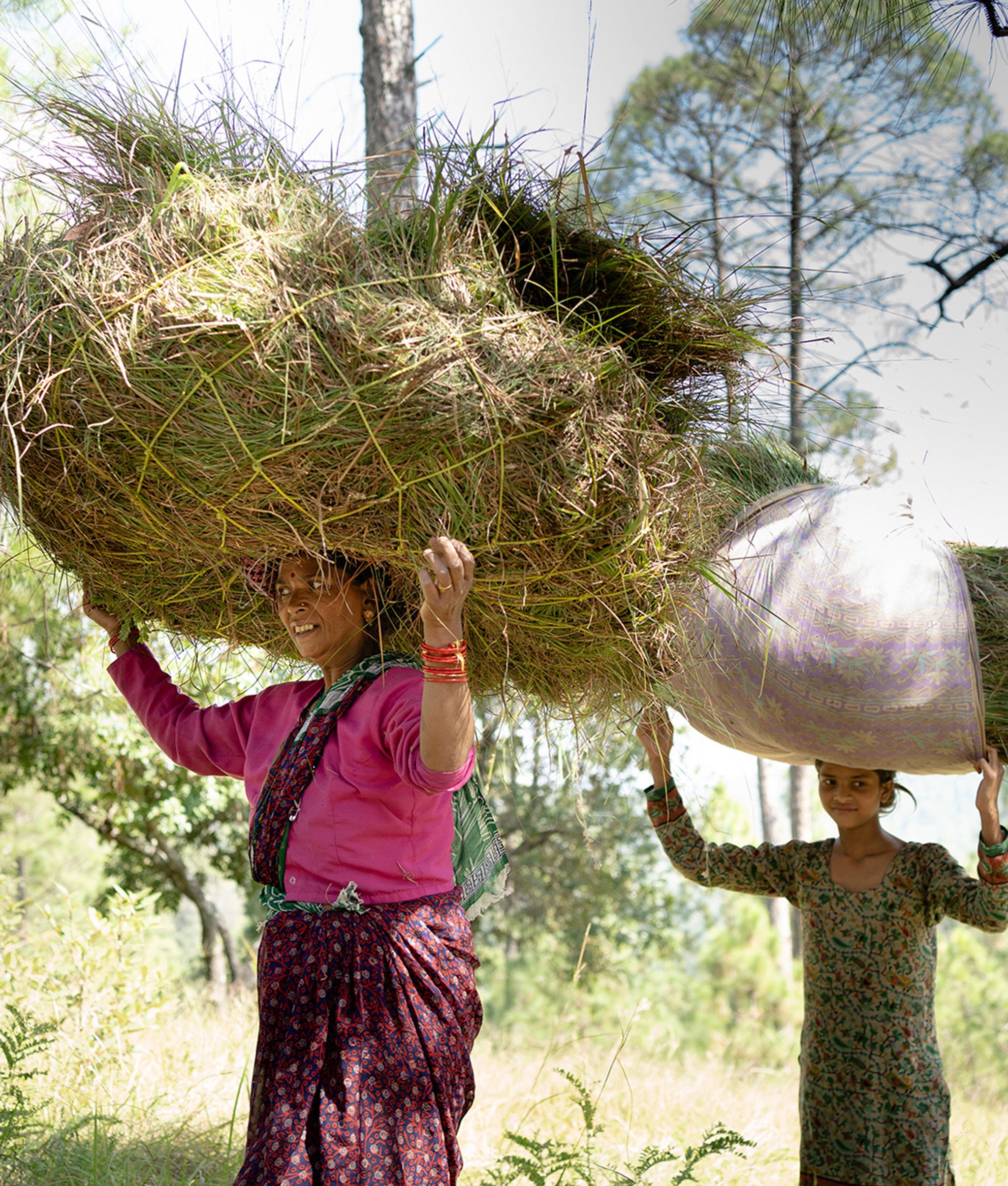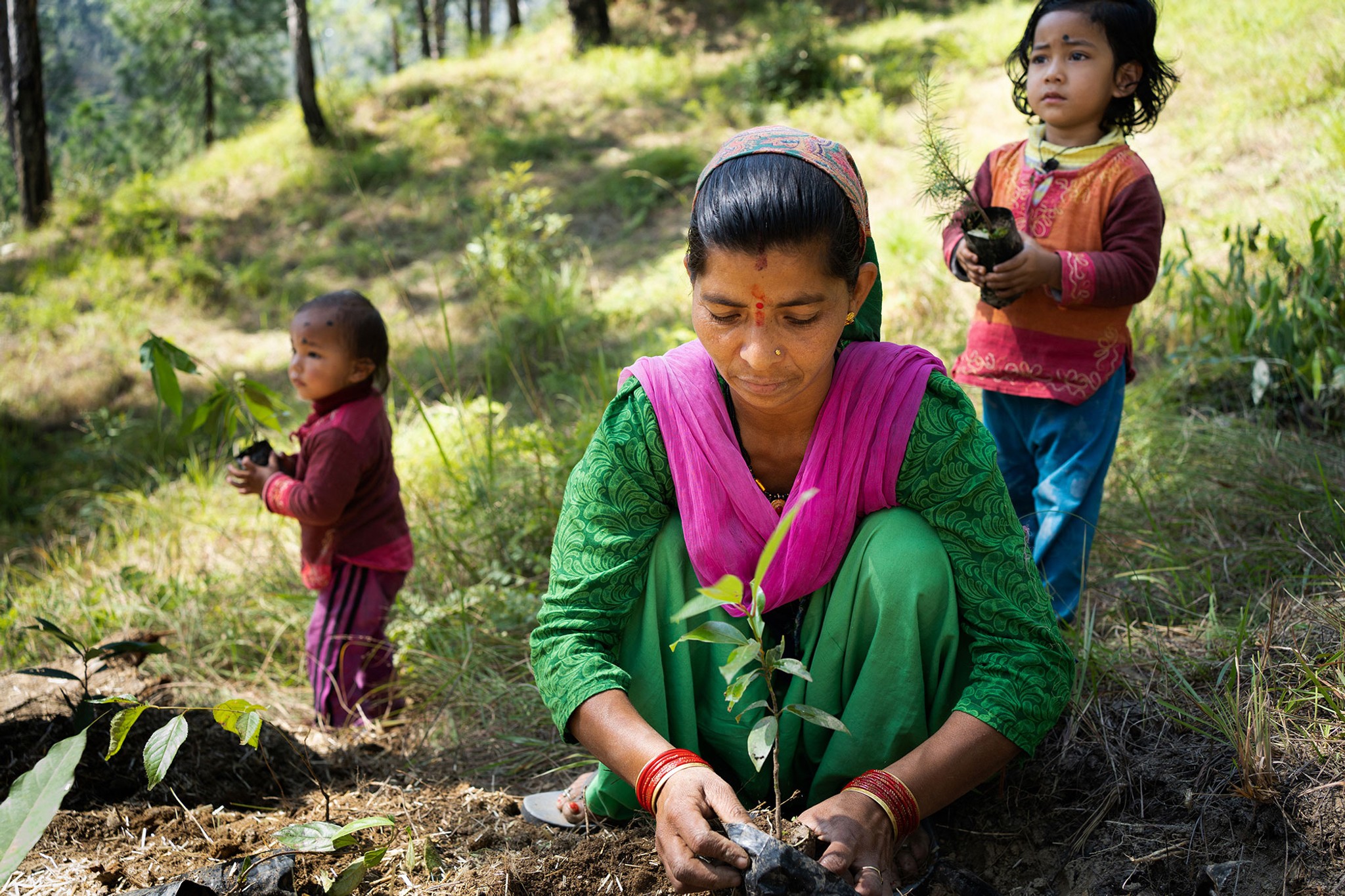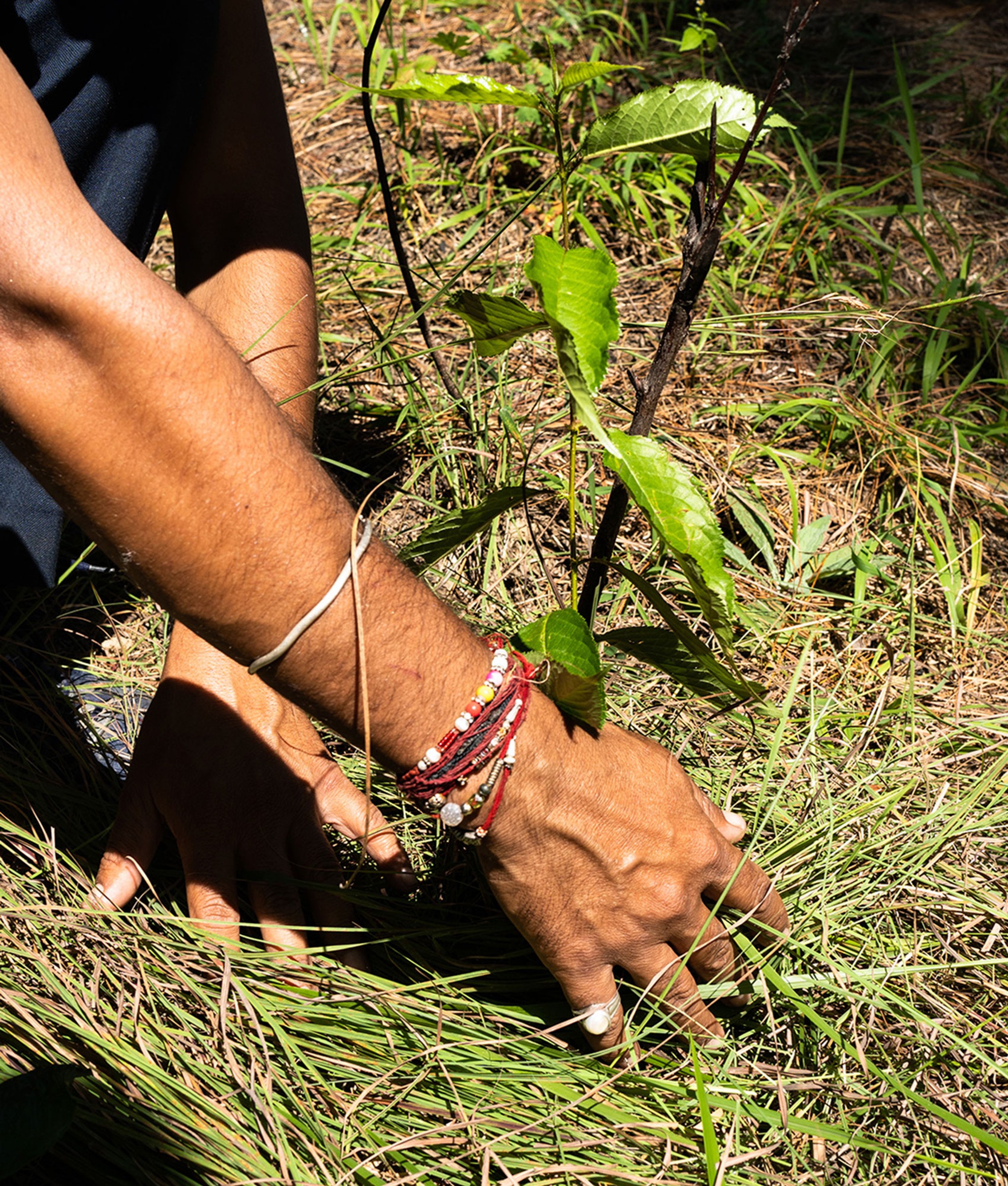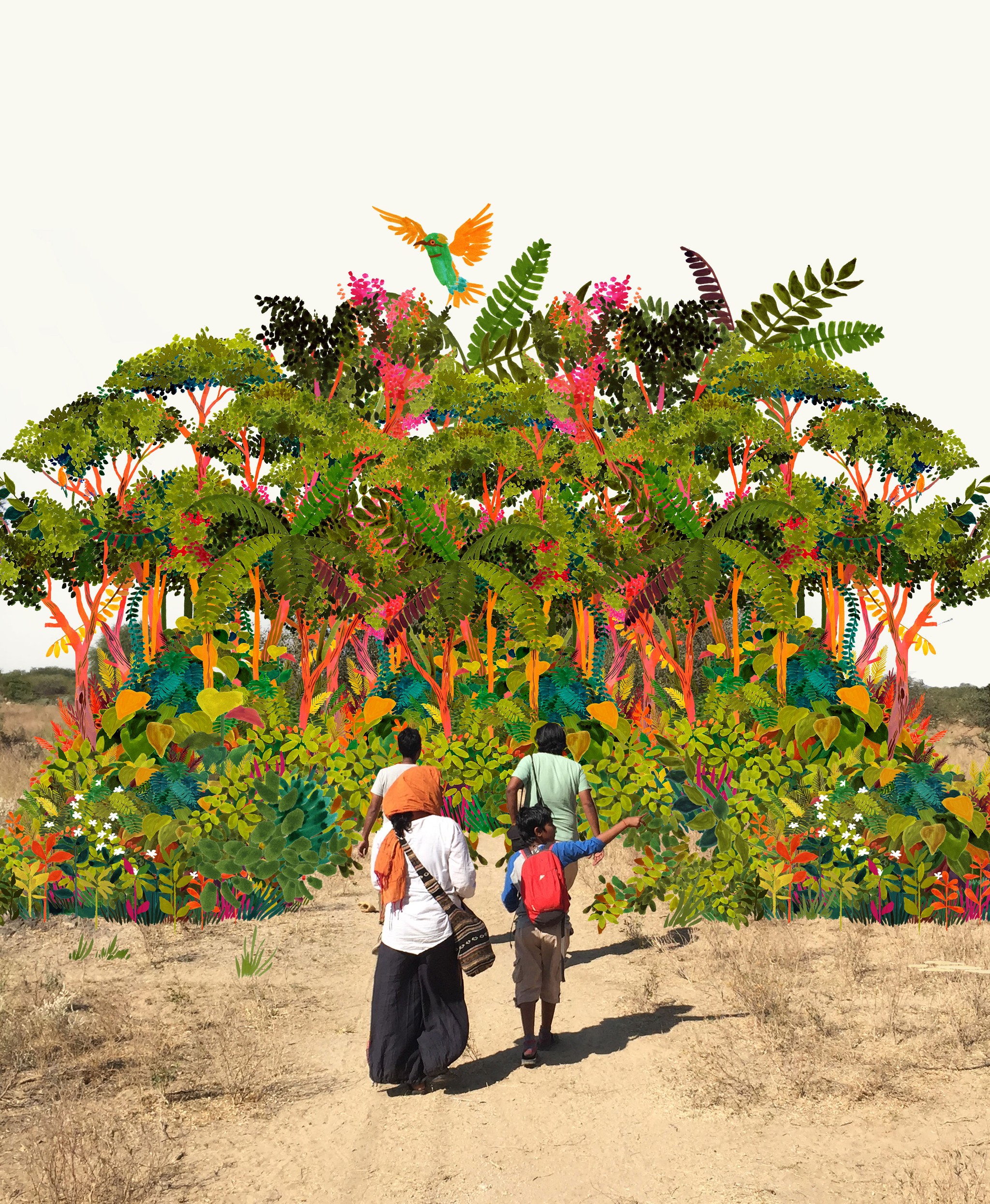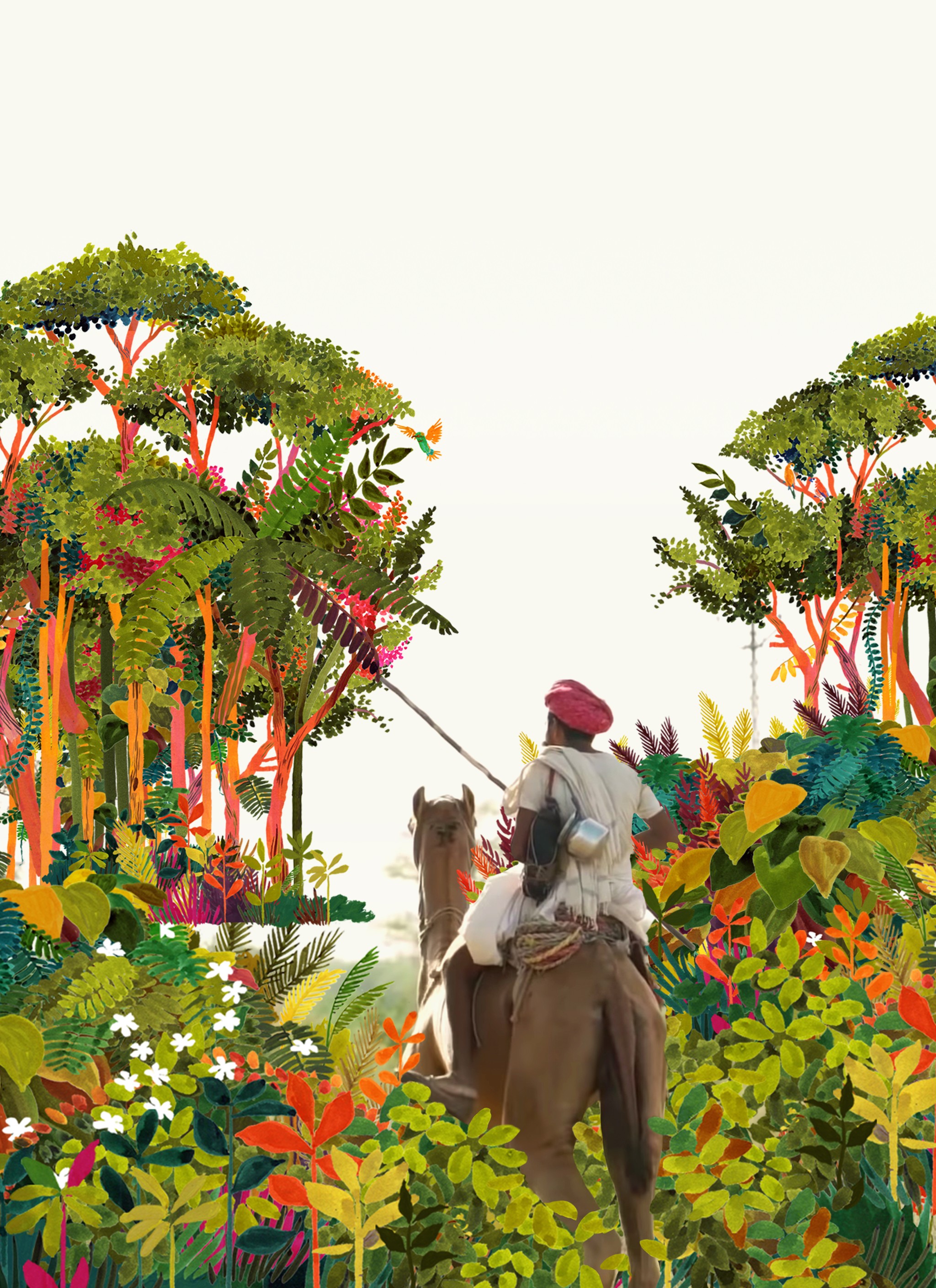Community Forest
Reviving a Himalayan Forest in Uttarakhand.

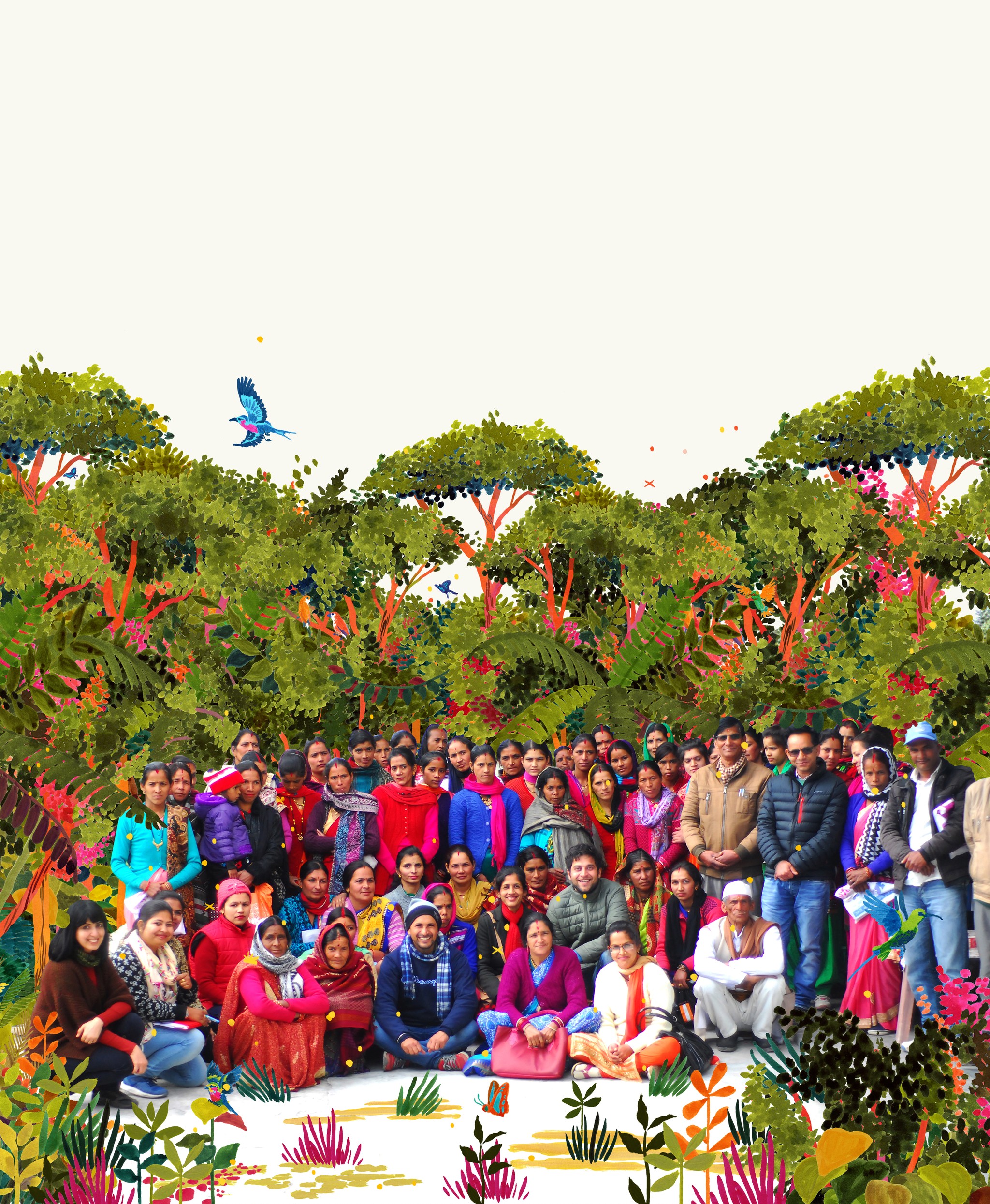
0
Trees
0
Square Meters
0
Native Species
Self Sustaining Forest
Planted in October 2021, Community Forest has shown impressive growth and ecological development. The forest floor is home to mushrooms and earthworms, indicating a healthy mycorrhizal network and a thriving below-ground ecosystem that supports the growth of the 1,000 trees planted. Among the native species, utis (Alnus nepalensis), hisalu (Rubus ellipticus) and padam (Prunus cerasoides) are growing most quickly.
The presence of diverse organisms, including butterflies like the common hedge blue (Acytolepis puspa), further highlights the forest’s success in fostering a vibrant ecosystem that supports both plant and animal life.
There is also evidence of ‘rubber tapping’ of the rubber trees in the forest - a sustainable process by which latex is collected from the trees - providing a natural, sustainable harvest and resource that benefits the local people and contributes to the forest's long-term ecological and economic sustainability.
Forest Maker
Sheeba Sen
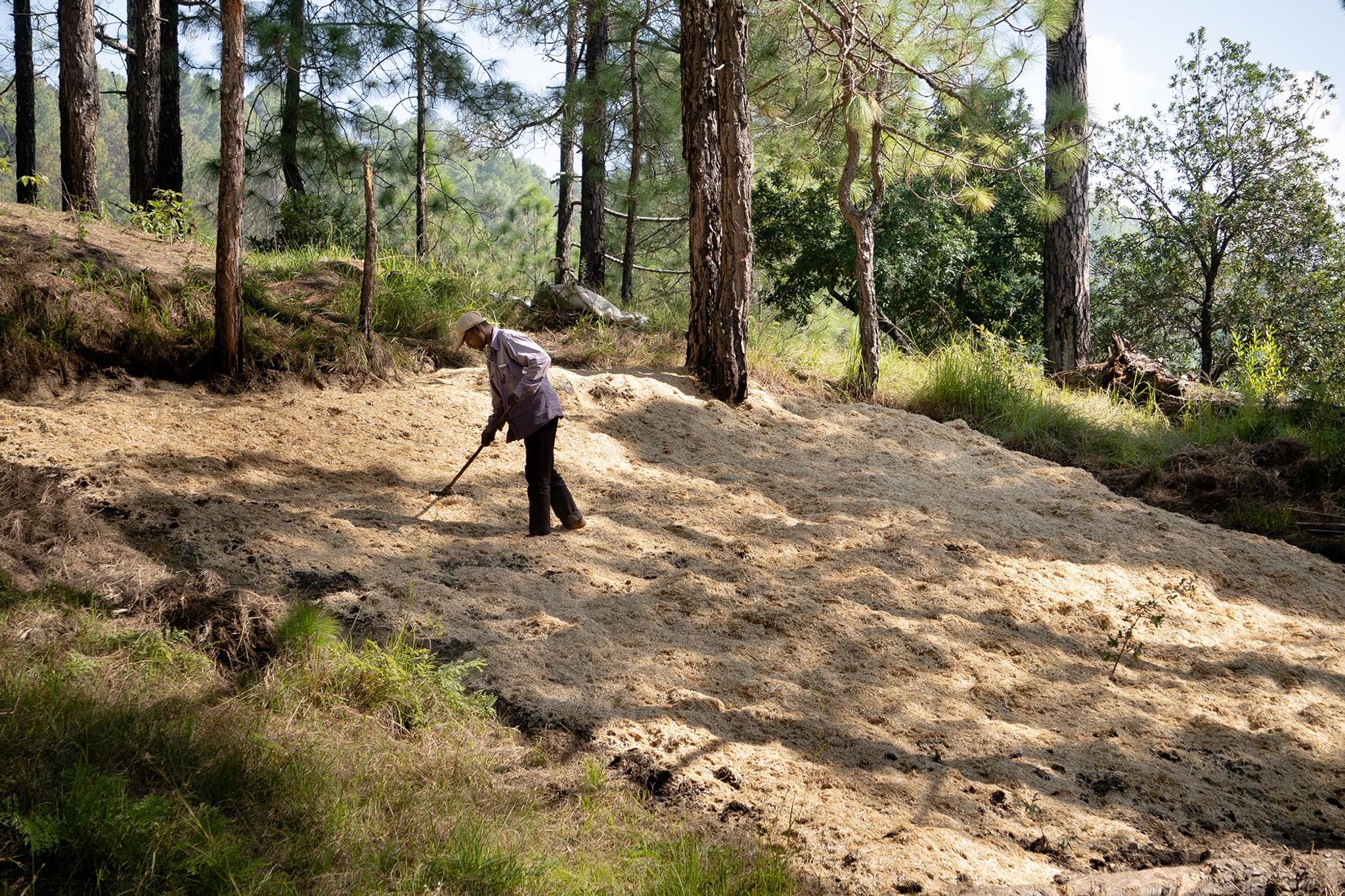

Ecosystem Restored
Final report: 21.11.2024
After approximately three years our SUGi Pocket Forests become self-sustaining. They no longer require human maintenance or watering, and can be handed over to Nature for biodiversity and complexity to naturally develop.
0%
Survival Rate
0
People living within 300 meters
0
kg of potential CO2 sequestration
Biodiversity
Biodiversity is all the different kinds of life you'll find in one area—the variety of animals, plants, fungi, and even microorganisms like bacteria that make up our natural world. Each of these species and organisms work together in ecosystems, like an intricate web, to maintain balance and support life.
0
Potential number of mammals
0
Potential number of birds
0
Potential number of amphibians
“We are securing basic livelihoods of locals and reviving native biodiversity.”
Sheeba Sen, SUGi Forest Maker
Forest Report: 2023
0 Years
Forest Age
0%
Survival Rate
0m
Tallest Tree
Again this year, the survival and growth rate of this forest is good, although it is not yet self-sustaining as it has required a little watering.
This forest has really brought the local people together. Not only is the community overjoyed to see the restoration of native forest, but more significantly, the forest has become a source of regular employment, particularly for local women. In an area where income opportunities for women are limited, this project stands out as one of several initiatives enabling women to earn a fair wage and support their families.
There has been a notable increase in biodiversity within the forest ecosystem, as wildlife is thriving here.
Forest Report: 2022
0 Months
Forest Age
0%
Survival Rate
0m
Tallest Tree
Survival rate is good for this pocket forest and growth rate is steady. The forest has only been watered through natural rains, except for the week of the planting of the forest when it was watered every day. This approach has shown to be a more sustainable way of growing these forests in remote locations and generates an excellent survival rate.
The community impacts of this forest have been significant. Local people are also appreciative of the restoration of native forest but perhaps more importantly, the forest is providing regular employment, in particular for local women. There are few means of making an income for women locally, but this project is among several through which women can earn a fair wage and support their families. They are involved in preparing the land for the forest, planting and unloading saplings, while some women are earning by selling good organic manure, dry grass and sticks. Our next steps will be to invest in de-centralised native species nurseries that women nurture in their own farms close by. Saplings would be sourced from here going forward.
Alongside unidentified species of earthworm and grasshoppers, a dung beetle (species unknown) has been seen in the pocket forest. This is very special for us - this forest was planted in the middle of an old monoculture pine plantation. These pine forests are a colonial legacy and are an invasive species at the altitude where we are working. They are very silent forests and have next to no animal or insect activity. The dung beetle, in particular, finds its way into moist and active soils, so it was a moment of pride when we spotted this beetle!
Orange oak leaves were seen sprouting just before the autumn; the Himalayan oak (Quercus lanata) is the dominant species of Central Himalayan forests. When they thrive, it is an indication that the whole forest is thriving.
Planting: October 2021
